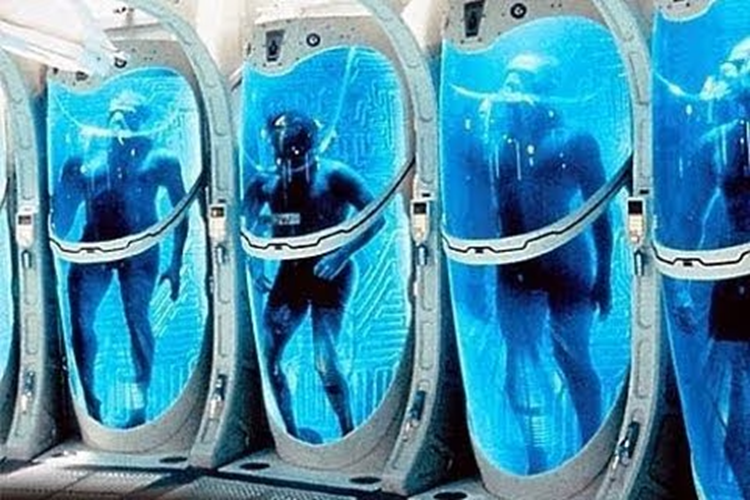- Courses
- GS Full Course 1 Year
- GS Full Course 2 Year
- GS Full Course 3 Year
- GS Full Course Till Selection
- Answer Alpha: Mains 2025 Mentorship
- MEP (Mains Enrichment Programme) Data, Facts
- Essay Target – 150+ Marks
- Online Program
- GS Recorded Course
- Polity
- Geography
- Economy
- Ancient, Medieval and Art & Culture AMAC
- Modern India, Post Independence & World History
- Environment
- Governance
- Science & Technology
- International Relations and Internal Security
- Disaster Management
- Ethics
- NCERT Current Affairs
- Indian Society and Social Issue
- NCERT- Science and Technology
- NCERT - Geography
- NCERT - Ancient History
- NCERT- World History
- NCERT Modern History
- NCERT Medieval History
- CSAT
- 5 LAYERED ARJUNA Mentorship
- Public Administration Optional
- ABOUT US
- OUR TOPPERS
- TEST SERIES
- FREE STUDY MATERIAL
- VIDEOS
- CONTACT US
First Client Cryogenically Frozen by Australian Cryonics Firm
First Client Cryogenically Frozen by Australian Cryonics Firm

Key Points:
1. Southern Cryonics, the first known cryonics facility in the Southern Hemisphere, has successfully cryogenically frozen its first client at its Holbrook facility in Australia.
2. The client, referred to as 'Patient One', was an 80-year-old man who died in Sydney before being frozen at minus 200 degrees Celsius.
3. The process of preserving the body began immediately after death and took approximately 10 hours.
4. It involved cooling the body to around 6 degrees Celsius, pumping a liquid anti-freeze through the body to preserve cells, and then reducing the body's temperature to minus 80 degrees Celsius.
4. The client's body was then transferred to the Holbrook facility, where it was further cooled to minus 200 degrees Celsius and placed in a special tank serving as a vacuum storage pod.
5. The entire process cost the client $170,000, with additional fees for medical teams assisting in the preservation process.
6. The Holbrook facility currently has the capacity to hold up to 40 bodies, with plans for possible expansion in the future.
Implications:
1. This development marks a significant milestone in cryonics technology in Australia and the Southern Hemisphere.
2. It raises ethical and scientific questions about the potential for human resurrection in the future.
3. The high cost of the procedure highlights the financial implications and accessibility of such technology.
What is Cryonics?
1. Definition and Origin: Cryonics is the practice of freezing an individual who has been declared legally dead, with the intention of reviving them in the future. The term is derived from the Greek word 'krýos', meaning 'icy cold'.
2. Objective: The goal of cryonics is to save lives by preserving individuals using extremely low temperatures until future medical advancements can restore them to full health.
3. Terminology: Those preserved through cryonics are referred to as 'cryopreserved patients' because advocates of cryonics do not consider them truly dead.
4. Process Initiation: The cryonic preservation process begins shortly after legal death and involves packing the body in ice and transporting it to a cryonics facility.
5. Blood Replacement: At the facility, the body's blood is replaced with antifreeze and organ-preserving compounds known as cryoprotective agents.
6. Preservation State: The body is then placed in a chamber filled with liquid nitrogen, where it is maintained at -196°C until potential future resuscitation.
7. Current Status: At present, a few hundred bodies have been cryogenically frozen.
Related Concept: Liquid Nitrogen
1. Properties: Liquid nitrogen is an inert, colourless, odourless, non corrosive, nonflammable, and extremely cold element used in cryonics.
2. Cryogenic Liquid: It is a cryogenic liquid with a boiling point of -320°F (-196°C), making it suitable for preserving biological tissue at extremely low temperatures.
Implications:
1. Hope for the Future: Cryonics offers hope for those facing terminal illnesses or death, with the potential for future revival.
2. Ethical Considerations: It raises ethical and scientific questions about the definition of death and the potential for human resurrection.
3. Financial Implications: The high cost of cryonic preservation highlights the financial implications and accessibility of such technology.
4. Growing Interest: The increasing number of cryopreserved patients suggests a growing interest in and acceptance of cryonics as a potential means of life extension.



